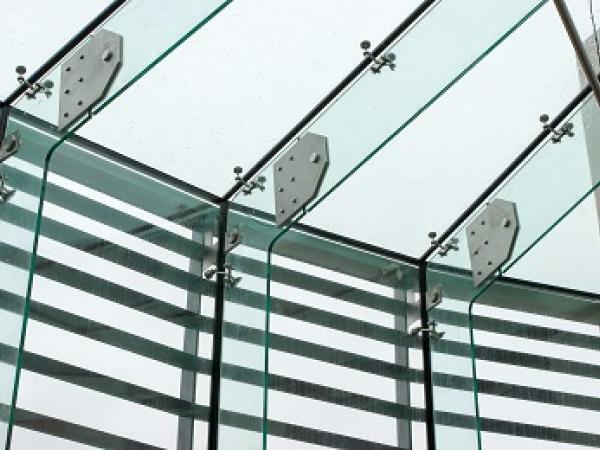Others also read
| Thanks to the committed involvement of architectural offices, university departments and industry associations, glasstec offers some unique added value: the special show: glass technology live!
| sedak GmbH & Co.KG, Germany, operates the largest insulating glass line in the world – about extraordinary glass processing and the role of LiSEC.
| LiSEC is the pioneer in terms of the development and production of production lines for large-scale insulating glasses – incl. interview with Hannes Spiss, facade engineer at Arup, Büro für Bautechnik (office for construction technology)
| Skaala was founded in 1956 as a one-man company. The father of the two current owners, Hannu and Markku Hautanen, was a carpenter and already in those days, he processed glass while repairing doors and windows.
| Cost cutting, it is often said, is difficult in glass production and processing as this sector is characterised by manual processes.
| Today’s functional buildings tend to have shapes that go much further than pure expediency, and glass is therefore used more and more frequently as a structural support element.
| In August 2013, the LiSEC development team started a major project with the mission: redesign of the tempering furnaces in order to save manufacturing costs and at the same time increase the process reliability. Result: the AEROFLAT.
| Touchscreen displays, LED technology and ultra-thin glasses: The multifunctional diversity of glass in IT and architecture will, in the long term, lead to a combination of both.
| Internorm is the market leader in Austria as a manufacturer of high-quality window systems and doors and the leading window brand in Europe.
| Modern, transparent and prestigious – large glass façades are very much in vogue for office complexes and industrial buildings.
| Since September 2015, the HTL (Polytechnic Glass) Kramsach in Tyrol is using a LiSEC cutting table „base CUT“ for the education of the students.
| For the past five years, Nile Aluminium & Metals Company, or AluNile, has had very positive experiences with Glaston's first FC500™ tempering furnace sold outside Finland.
| At the Bystronic glass Neuhausen-Hamberg location, there is a cause for great delight: The 1000th sealing robot, namely the high-performance "speed’sealer" was delivered a few days ago to a Chinese customer.
| The Flachglas Group employs around 1,100 employees at three sites in Switzerland and three sites in Germany – around 650 of them generate revenues of approx. € 70 million at the Wernberg site (Bavaria).
| Over half the world’s seven billion inhabitants live in cities, by the year 2050 the number will grow to almost ten billion. In order to avoid a climatic collapse in the metropolises, there is no other alternative to energy-efficient buildings.
| In just two and a half decades glass has very quickly made the transformation from simple window glass to an almost universally applicable material.
| Cities are eating up an increasing amount of heat and electricity. In order to reduce this consumption, buildings have to become increasingly efficient and integrate more renewable energies.
| The crisis of the photovoltaic industry is drawing to a close. While it is true demand for solar modules is dropping in Europe, demand in many other regions is rising rapidly.
| Finding ways to improve energy efficiency is one of the greatest challenges facing contemporary architecture.
| Although the costs for solar power have come down considerably lately, photovoltaics are still unable to compete with conventional energy sources.
| Thanks to on-going research and development efforts glass products can take on ever new functions.
| High-performance functional glazing has a significant impact on the energy efficiency of buildings and their level of usability or life quality. Experts agree that increased demands will lead to improved functionality of the glass products used in facades.
| This paper intends to present how applications of structural glass systems have evolved in HDA’s projects since the author’s intial work at La Villette with Peter Rice and RFR.
| October 2004: At glasstec, A+W and HEGLA present to the expert public the first SortJet controlled by the dynamic, online optimisation system DynOpt. For the first time ever, any sequence required can be achieved automatically, with optimum – in an elegant yet compact way.
| In the design of interior spaces, glass is taking on an increasingly prevalent role. Offering numerous new products, innovative refining techniques and stepped-up information activities, the glass industry has successfully opened the door to this major market segment.

























